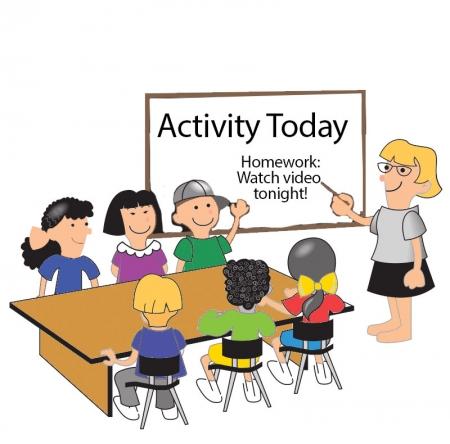
One of the biggest trends in educational technology is the flipped classroom. Like the name implies, a flipped classroom reverses the traditional model of delivering direct instruction in class and assigning practice and activities for homework. In a classroom that has been “flipped,” content is delivered at home, usually through online methods such as short videos, and once back in the classroom, students engage in activities that apply that material.
The flipped classroom is not for everyone. Here are some of the advantages and drawbacks of the model so you can better decide if you want to give this method a try.
Pros
The flipped classroom model can be very appealing to students, especially if activities are enjoyable and interesting. Being an active participant in class rather than passively listening to a PowerPoint presentation or a lecture, for example, is inherently more engaging.
Because classroom time is devoted to activities, the flipped classroom promotes student collaboration and problem-solving. Time in class is spent applying information rather than merely listening or receiving content.
Students can replay or reread online instructional content and learn at their own pace. If delivered in a video form, students can rewind the lesson to get a better grasp or fast-forward if they understand the concept.
The burden of homework can be greatly reduced. Most flipped classrooms only assign very short video pieces and brief notetaking. Not surprisingly, flipped classrooms generally have better rates of homework completion.
If there’s less homework assigned, that means less grading for teachers. Teachers’ time during class is also freed up to help students individually, answer questions and assess work.
Students have more time to formulate questions and bring them to class. And with teachers circulating rather than delivering content, students can get answers.
Cons
Students have to complete their assignments outside class to make the model work. If enough students don’t come to class prepared, learning activities could be moot.
It can be time-consuming to find quality content that meets instructional goals. Some teachers create their own short videos, but that requires a significant amount of work, especially the first time out.
Students who don’t have personal devices or reliable internet can be left behind. Though video can be viewed on phones, not all students may have access.
For teachers who already devote class time to group work and collaboration, the flipped classroom might not look much different.
Not everyone learns best from a screen, and relying on videos to deliver instruction isn’t much of an improvement over a lecture. If the video is poor quality, not on grade level or just plain boring, it’s even worse.
If you decide to try this model, the road could be bumpy in the beginning. Your students will need time to adjust to this change. You will also have to clearly communicate your methods to all stakeholders — parents, your administration, colleagues —and create a rationale for flipping your classroom.
As you can see, the lists of pros and cons are even. There are many teachers in the city already using this method, but whether or not you’ll be one of them is up to you, your students, the subject you teach and your school environment.
Sandy Scragg is an instructional technology specialist with more than 15 years of experience in New York City public schools.